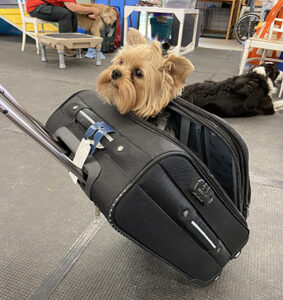

Tricks engage the dog’s brain and give the dog a job while having fun for both you and your dog.


Tricks engage the dog’s brain and give the dog a job while having fun for both you and your dog.
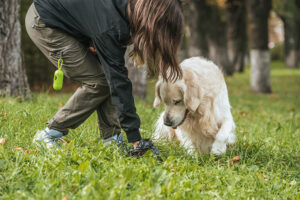

by Ann Gafke’s Teacher’s Pet, 325 E. Dripping Springs Rd, Columbia, MO 65202
Phone: (573) 443-0716 or Email: Contact Us
Register Online
No matter what you call it – housebreaking, puppy potty training, toilet training, house training, Number One or Two, Want to go out – we all want our dogs to learn to pee and poop outside.. We can help.
Your task is to teach your dog where the dog’s toilet is. Simple as that.
If the dog pees or poops in the house, you have not yet taught the dog where the toilet is. Follow these steps for help with housebreaking. Also, register for training classes with us. How to teach housebreaking and other important lessons is a central part of our curriculum. See Puppy Kindergarten or Level 1 for older dogs.


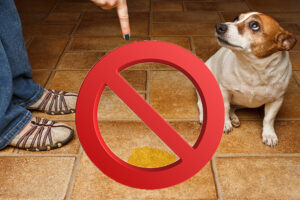

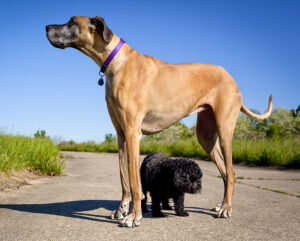

Phone: (573) 443-0716 or Email: Contact Us
Register Online
This round up of research identifies dog breeds more susceptible bone cancer. UK researchers found that “larger, heavier dogs and those with longer legs and skulls are typically at a greater risk of developing osteosarcoma.” http://bit.ly/3tMagOR
Our connections to this report are the exercises we teach about the dog’s health and wellbeing. Here are two.
The team analyzed health data on 906,967 dogs for this study. This Daily Mail report includes an impressive list of dog breeds and their likelihood of the bone cancer.
Ann Gafke’s Teacher’s Pet, 325 E. Dripping Springs Rd, Columbia, MO 65202
Phone: (573) 443-0716 or Email: Contact Us
Register Online
There are at least five reasons why the ‘daily exam’ exercise is essential in early dog training and periodically for the dog’s well being there after.
Place you dog on his/her back between you legs belly-up. In this position, you and your dog will be telling each other who is in charge and that the dog trusts you as the leader. Of course, if the dog resists assuming this position, the dog may be telling you the dog does not accept you as leader and does not yet fully trust you.
After your dog lies quietly, exam the dogs parts — ears, teeth and gums, legs, feet and toenails, belly coat. This is part grooming introduction and part physical exam. In this process, you will be reducing the probability of a dog bite by getting the dog used to human hands in the dog’s mouth and handling the dog’s other primary tool — the feet. Finally, the exercise teaches the dog to remain on task — in this case lying between your legs.
Ann Gafke’s Teacher’s Pet, 325 E. Dripping Springs Rd, Columbia, MO 65202
Phone: (573) 443-0716 or Email: Contact Us
Register Online
A must exercise for early in training is the ‘individual daily exam.’ Do it if you had time for no other training activity. When the dog wiggles in this position, correct. When the dog is quiet, praise. The exercise teaches your dog who is in charge, demonstrates the dog’s trust in you, enables you to examine the dog for health issues, introduces your dog to grooming, reduces the probability of a dog bite by handling the dog’s mouth and feet, teaches your dog time-on-task behavior. After you complete the daily exam, put your dog in the position we call ‘relax’. Examine the dogs parts in this position, too. These exercises lay the foundation for excellent visits to the vet. Your dog becomes accepting of having its parts examined.
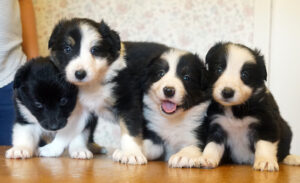

Phone: (573) 443-0716 or Email: Contact Us
Register Online
The answer is Yes & No – based on a four year research project at the University of Veterinary Medicine in Vienna. https://www.nature.com/articles/s41598-020-74310-7
The research used the Vienna Dog Personality Test (VIDOPET) to study the dogs Sociability-obedience, Activity-independence, Novelty seeking, Problem orientation, and Frustration tolerance. They tested 217 Border Collies from six months to 15 years of age. They retested 37 dogs four years later.
They found, as in human personalities, the more active dogs among their peers at a young age remained the more active as they aged. However, among the five traits, they found individual differences. For example novelty-seeking – that is a dog’s interest in distractions – did not decline until middle age and continued to decline, and problem-orientation – that is a dog’s interest in and ability to solve problems – increased until middle age and remained stable after that.
Because of the individual differences among dogs, researchers cautioned against over-generalization of global age trends in dogs.
Those criteria used is in this test are important elements of the training activities throughout our school beginning with puppies to introduce them to the human world we’ve invited them into and help them conclude – Been there, Done that, No need to worry about that. https://dogschooling.com/puppy-kindergarten/
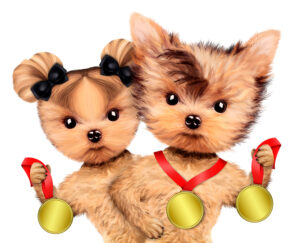

Phone: (573) 443-0716 or Email: Contact Us
Register Online
Our Puppy Kindergarten prepares your puppy for the first certificate exam in our school. It also qualifies your puppy to earn the American Kennel Club’s Star Puppy Recognition and to begin work on the AKC Canine Good Citizenship Certification (CGC).


325 E. Dripping Springs Rd, Columbia, MO 65202
Phone: (573) 443-0716 or Email: Contact Us
Register Online for our winter class session.
Dog class can be exhausting – but one can learn a lot. Register now for our winter session that begins the week of January 4. Get one-on-one coaching, video critiques, online tutorials and small group classes. Here is a description of our virtual dog training services during this virus crisis:
Use this contact form to get more information: